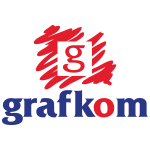-
Posts
466 -
Joined
Reputation Activity
-
 Bryan Rieger got a reaction from influxx in Machine Learning: Object Selection Tool
Bryan Rieger got a reaction from influxx in Machine Learning: Object Selection Tool
I haven't used these machine learning models yet, but I just wanted to say how nice a surprise it was to see that these were optional downloads, and not simply bundled into the existing applications. I really appreciate Serif giving creatives the respect to choose whether or not they want to integrate any machine learning into their workflows.
Also, kudos for side-stepping the blanket AI hype train and calling these 'Machine Learning Models', which is not only more accurate, but also helps to frame the discussion in a much more informed manner.
-
 Bryan Rieger reacted to toddlauzon in How to create Outline Brushes in Affinity Designer 2?
Bryan Rieger reacted to toddlauzon in How to create Outline Brushes in Affinity Designer 2?
you can always use the Appearance panel and do overlay 2 strokes...for the shadow you would need to use an FX though.
-
 Bryan Rieger got a reaction from ElleBee in Why won't Serif listen to customer needs and create a Lightroom alternative for us?
Bryan Rieger got a reaction from ElleBee in Why won't Serif listen to customer needs and create a Lightroom alternative for us?
Um, yeah, sure… FWIW if Serif ceased support for iPads I (as a designer and illustrator) wouldn't be using Affinity products at all. I get that some folks really want a DAM, and some folks really want {insert your product/feature request here}, but please let's not minimize others priorities because they don't align with yours.
At the end of the day it all comes down to Serif's priorities for their products, and their business.
-
 Bryan Rieger got a reaction from loukash in Please NO MORE NEW FEATURES!
Bryan Rieger got a reaction from loukash in Please NO MORE NEW FEATURES!
I don’t have much to add beyond what’s already been said (many times), but my biggest disappointment is the radio silence we’ve had from Serif (and Canva) management since the acquisition.
2.5 was an utterly botched release so that Ash could get up on stage and take part in High School Musical - Canva Edition.
I’m glad Serif are taking their time with 2.6, but that still doesn’t change the fact that in the meantime, trust in Serif and Canva for many folks continues to erode rapidly.
I don’t participate here much anymore (the website takes far too long to load after the recent forum update), and I’m tired of hearing that issues are logged with developers- often for years on end, without resolution.
-
 Bryan Rieger got a reaction from Chul in Machine Learning: Object Selection Tool
Bryan Rieger got a reaction from Chul in Machine Learning: Object Selection Tool
I haven't used these machine learning models yet, but I just wanted to say how nice a surprise it was to see that these were optional downloads, and not simply bundled into the existing applications. I really appreciate Serif giving creatives the respect to choose whether or not they want to integrate any machine learning into their workflows.
Also, kudos for side-stepping the blanket AI hype train and calling these 'Machine Learning Models', which is not only more accurate, but also helps to frame the discussion in a much more informed manner.
-
 Bryan Rieger got a reaction from GRAFKOM in Please NO MORE NEW FEATURES!
Bryan Rieger got a reaction from GRAFKOM in Please NO MORE NEW FEATURES!
I don’t have much to add beyond what’s already been said (many times), but my biggest disappointment is the radio silence we’ve had from Serif (and Canva) management since the acquisition.
2.5 was an utterly botched release so that Ash could get up on stage and take part in High School Musical - Canva Edition.
I’m glad Serif are taking their time with 2.6, but that still doesn’t change the fact that in the meantime, trust in Serif and Canva for many folks continues to erode rapidly.
I don’t participate here much anymore (the website takes far too long to load after the recent forum update), and I’m tired of hearing that issues are logged with developers- often for years on end, without resolution.
-
 Bryan Rieger got a reaction from lepr in Please NO MORE NEW FEATURES!
Bryan Rieger got a reaction from lepr in Please NO MORE NEW FEATURES!
I don’t have much to add beyond what’s already been said (many times), but my biggest disappointment is the radio silence we’ve had from Serif (and Canva) management since the acquisition.
2.5 was an utterly botched release so that Ash could get up on stage and take part in High School Musical - Canva Edition.
I’m glad Serif are taking their time with 2.6, but that still doesn’t change the fact that in the meantime, trust in Serif and Canva for many folks continues to erode rapidly.
I don’t participate here much anymore (the website takes far too long to load after the recent forum update), and I’m tired of hearing that issues are logged with developers- often for years on end, without resolution.
-
 Bryan Rieger reacted to loukash in Why I absolutely hate Affinity Photo (Constructive critiscism.)
Bryan Rieger reacted to loukash in Why I absolutely hate Affinity Photo (Constructive critiscism.)
No offense, but you already lost me during your clickbait-y thread title: "Hate" is supposed to be "constructive"? Gimme a break.
As for the rest of your essay: tl;dr
-
 Bryan Rieger got a reaction from pdaniun in Machine Learning: Object Selection Tool
Bryan Rieger got a reaction from pdaniun in Machine Learning: Object Selection Tool
I haven't used these machine learning models yet, but I just wanted to say how nice a surprise it was to see that these were optional downloads, and not simply bundled into the existing applications. I really appreciate Serif giving creatives the respect to choose whether or not they want to integrate any machine learning into their workflows.
Also, kudos for side-stepping the blanket AI hype train and calling these 'Machine Learning Models', which is not only more accurate, but also helps to frame the discussion in a much more informed manner.
-
 Bryan Rieger got a reaction from AdamRatai in Machine Learning: Object Selection Tool
Bryan Rieger got a reaction from AdamRatai in Machine Learning: Object Selection Tool
I haven't used these machine learning models yet, but I just wanted to say how nice a surprise it was to see that these were optional downloads, and not simply bundled into the existing applications. I really appreciate Serif giving creatives the respect to choose whether or not they want to integrate any machine learning into their workflows.
Also, kudos for side-stepping the blanket AI hype train and calling these 'Machine Learning Models', which is not only more accurate, but also helps to frame the discussion in a much more informed manner.
-
 Bryan Rieger got a reaction from Helmuth Pandora in Machine Learning: Object Selection Tool
Bryan Rieger got a reaction from Helmuth Pandora in Machine Learning: Object Selection Tool
I haven't used these machine learning models yet, but I just wanted to say how nice a surprise it was to see that these were optional downloads, and not simply bundled into the existing applications. I really appreciate Serif giving creatives the respect to choose whether or not they want to integrate any machine learning into their workflows.
Also, kudos for side-stepping the blanket AI hype train and calling these 'Machine Learning Models', which is not only more accurate, but also helps to frame the discussion in a much more informed manner.
-
 Bryan Rieger got a reaction from garrettm30 in Advanced Page Management: General Improvements
Bryan Rieger got a reaction from garrettm30 in Advanced Page Management: General Improvements
Ah, thanks @MikeTO that was it. I didn't realized I had changed them ages ago. this is what my Settings > Publisher > Document > Shortcuts looks like now.
Wouldn't it make sense just to make these the defaults, instead of requiring users go in and set them themselves?
-
 Bryan Rieger got a reaction from TonyS3 in Pencil, Pen and Node Tool improvements
Bryan Rieger got a reaction from TonyS3 in Pencil, Pen and Node Tool improvements
Sure thing @EmT.
In this video the toolbar starts with a black stroke and a width of 5.5, while the colour panel also shows the black stroke, the stroke panel indicates no stroke. Drawing with this results in a curve with no stroke or colour applied. Applying a colour (green) to the strokes makes them visible (0.2 stroke width), yet then drawing another line with a green stroke, 5.5 width in the toolbar results in a no stroke displayed in the stroke panel, and a curve drawn with no colour or width.
CleanShot 2024-10-22 at 09.03.03.mp4
-
 Bryan Rieger got a reaction from DNB in Machine Learning: Object Selection Tool
Bryan Rieger got a reaction from DNB in Machine Learning: Object Selection Tool
I haven't used these machine learning models yet, but I just wanted to say how nice a surprise it was to see that these were optional downloads, and not simply bundled into the existing applications. I really appreciate Serif giving creatives the respect to choose whether or not they want to integrate any machine learning into their workflows.
Also, kudos for side-stepping the blanket AI hype train and calling these 'Machine Learning Models', which is not only more accurate, but also helps to frame the discussion in a much more informed manner.
-
 Bryan Rieger got a reaction from Iztok in Affinity publisher - export small size pdf
Bryan Rieger got a reaction from Iztok in Affinity publisher - export small size pdf
Hi @Iztok, I managed to get an export of your 31.4 mb pdf down to 1.5 mb (see attached) in Publisher 2.5.5 using the default PDF (digital - small size) settings with many of the vector elements still intact. I don't have the font you're using so it's substituted a standard font, but that makes me wonder if possibly the embedded font you are using might be the source of the larger file size.
I would try changing the settings for embedded fonts to see if that helps, and I'd also suggest ensuring subset fonts is checked in case you're using large, international fonts with hundreds (or possibly thousands) of glyphs that are not actually used in your document.
Geološke poti A 4 V3.pdf
-
 Bryan Rieger reacted to Seneca in FEATURE REQUEST - INTEGRATION WITH CANVA
Bryan Rieger reacted to Seneca in FEATURE REQUEST - INTEGRATION WITH CANVA
I don't think this would happen. I think a lot of people would welcome the fact that one could export design elements or files into Affinity products for further processing and then send it back to Canva.
Nobody would force anybody to use Canva and those who want it will have a way of doing it.
This is very similar to what Affinity has done with AI. It's an opt in feature.
So those who want to use Canva will have a way of sharing files with Canva and those who don't want to have anything to do with Canva will simply not use it.
-
 Bryan Rieger got a reaction from .: NICKY G. :. in Feature request to improve studio panels on desktop
Bryan Rieger got a reaction from .: NICKY G. :. in Feature request to improve studio panels on desktop
This is essentially a copy of the (auto) collapsible iconic panels in the Adobe interfaces, which I use a lot, especially with plug-ins that have UI panels. It just helps to get everything out of the way, and not have to remember where the panels are, or what persona they may be in. Not sure if this impinges on any Adobe patents, but it's a nice quality of life improvement, both on the iPad and desktop IMHO.
-
 Bryan Rieger got a reaction from Aristocrates in Machine Learning: Object Selection Tool
Bryan Rieger got a reaction from Aristocrates in Machine Learning: Object Selection Tool
I haven't used these machine learning models yet, but I just wanted to say how nice a surprise it was to see that these were optional downloads, and not simply bundled into the existing applications. I really appreciate Serif giving creatives the respect to choose whether or not they want to integrate any machine learning into their workflows.
Also, kudos for side-stepping the blanket AI hype train and calling these 'Machine Learning Models', which is not only more accurate, but also helps to frame the discussion in a much more informed manner.
-
 Bryan Rieger got a reaction from thedivclass in Machine Learning: Object Selection Tool
Bryan Rieger got a reaction from thedivclass in Machine Learning: Object Selection Tool
I haven't used these machine learning models yet, but I just wanted to say how nice a surprise it was to see that these were optional downloads, and not simply bundled into the existing applications. I really appreciate Serif giving creatives the respect to choose whether or not they want to integrate any machine learning into their workflows.
Also, kudos for side-stepping the blanket AI hype train and calling these 'Machine Learning Models', which is not only more accurate, but also helps to frame the discussion in a much more informed manner.
-
 Bryan Rieger got a reaction from bbrother in Advanced Page Management: Page Reflow Control
Bryan Rieger got a reaction from bbrother in Advanced Page Management: Page Reflow Control
So, my 2¢ is that the MASSIVE icons that appear when you interact with the page thumbnails (shown above) are really unintuitive, and I feel like I'll need to keep a desktop reference to decipher what on earth they're supposed to indicate. Why when I drag a page do I get an icon showing me dragging 3 pages? Would it be possible to display what action is being represented in the icon by also displaying a text description in the status bar?
Hiding functionality behind a plethora of keyboard shortcuts is great for power users, but there is ABSOLUTELY NO DISCOVERABILITY for more casual users, or folks coming to the apps fresh. This desperately needs to be made more intuitive, and user friendly.
They're also REALLY BIG, but still really indecipherable.
-
 Bryan Rieger reacted to sc300 in Why no slug area Publisher
Bryan Rieger reacted to sc300 in Why no slug area Publisher
The slug is used for much more than imposition information.
As a FMCG packaging designer I'm required by my client to use the slug area for production information. (order information, product and packing information and instructions to the printer). Typically for me it might be an area 25-45mm on one side of the page. The printer will mask that area during imposition, but it's still needed in preproduction so that similar packs aren't confused. Confusion can be a big issue when I send finished art pdfs to my client, who then sends the artwork along with product orders to a factory in another country who then sends the packaging artwork on to their printer. If you have multiple suppliers, then errors can easily multiply.
Yes, you can extend the bleed area to include the slug info, but that will also move the automatic crop marks away from the bleed area, which the printer objects to, so the alternative is to draw in manual crop marks. When you're laying out multiple packs (sometimes 30 - 40 over a few days) manual crop marks become tedious and time consuming.
-
 Bryan Rieger got a reaction from fde101 in Why no slug area Publisher
Bryan Rieger got a reaction from fde101 in Why no slug area Publisher
Because the guy doing your print run will forever curse your name, wonder why you didn't just include a slug, and likely charge you double.
-
 Bryan Rieger reacted to PaulEC in Why no slug area Publisher
Bryan Rieger reacted to PaulEC in Why no slug area Publisher
"I daresay you haven't had much practice, sometimes I've believed as many as six impossible things before breakfast."
-
 Bryan Rieger got a reaction from Juhani in Auto apply Colour Panel's colour picker
Bryan Rieger got a reaction from Juhani in Auto apply Colour Panel's colour picker
I MUCH prefer the colour picker working this way by default, but I do agree with @loukash in that having the option to use the existing method as an alternate would be useful (when it's available on macOS).
-
 Bryan Rieger got a reaction from Sean P in Reading Order Panel
Bryan Rieger got a reaction from Sean P in Reading Order Panel
The checkmark (and X) icons are also surprisingly LARGE (make it feel awkward to read/scan), and feel like bad placeholder art (ie: different line widths).
Should I assume these icons are also temporary placeholders?










